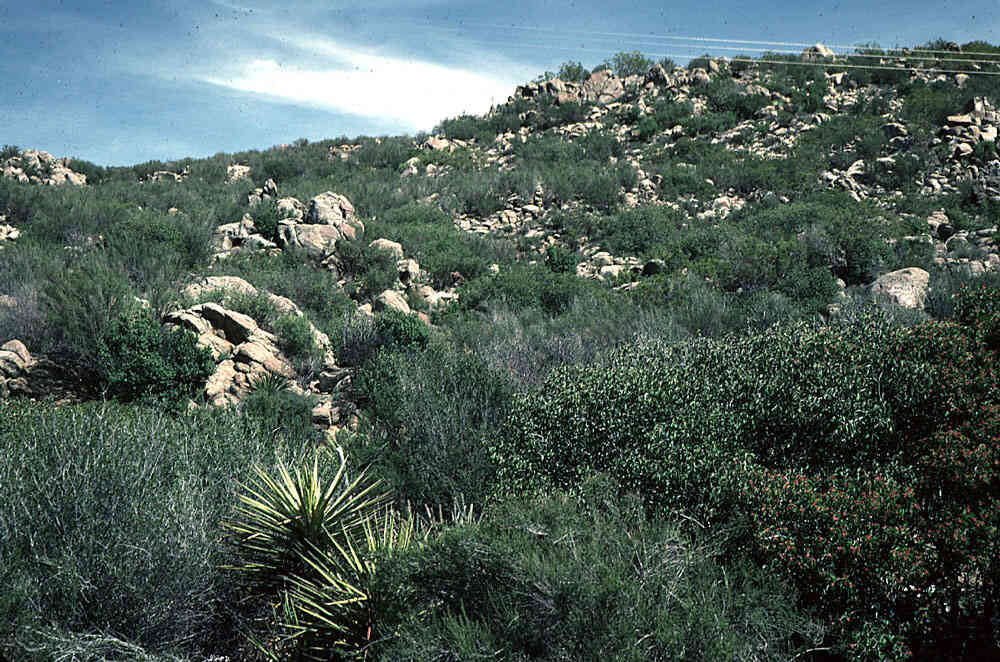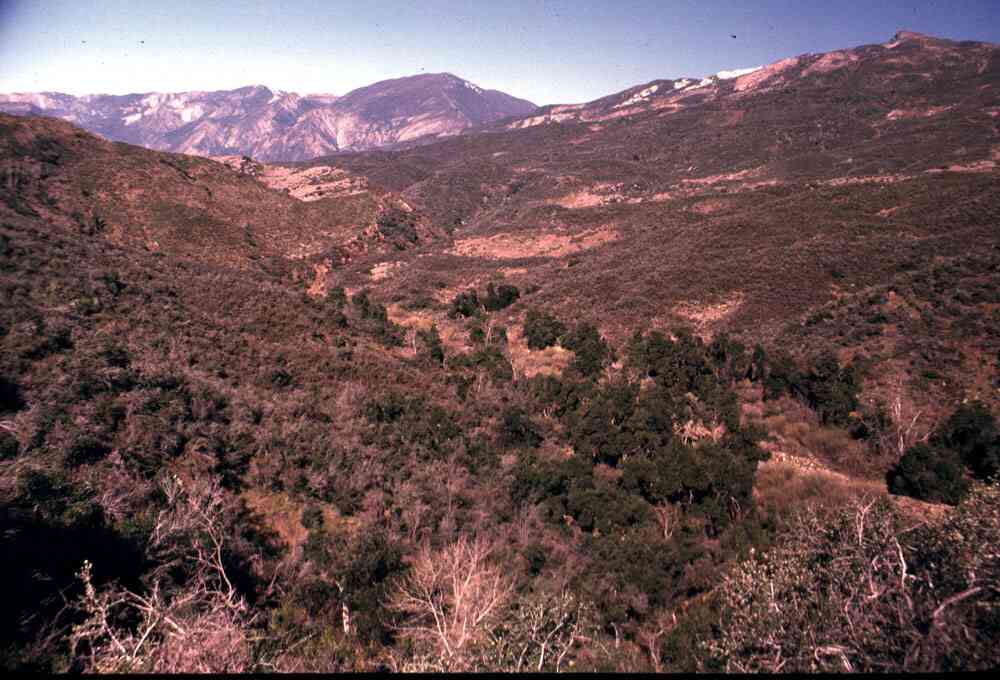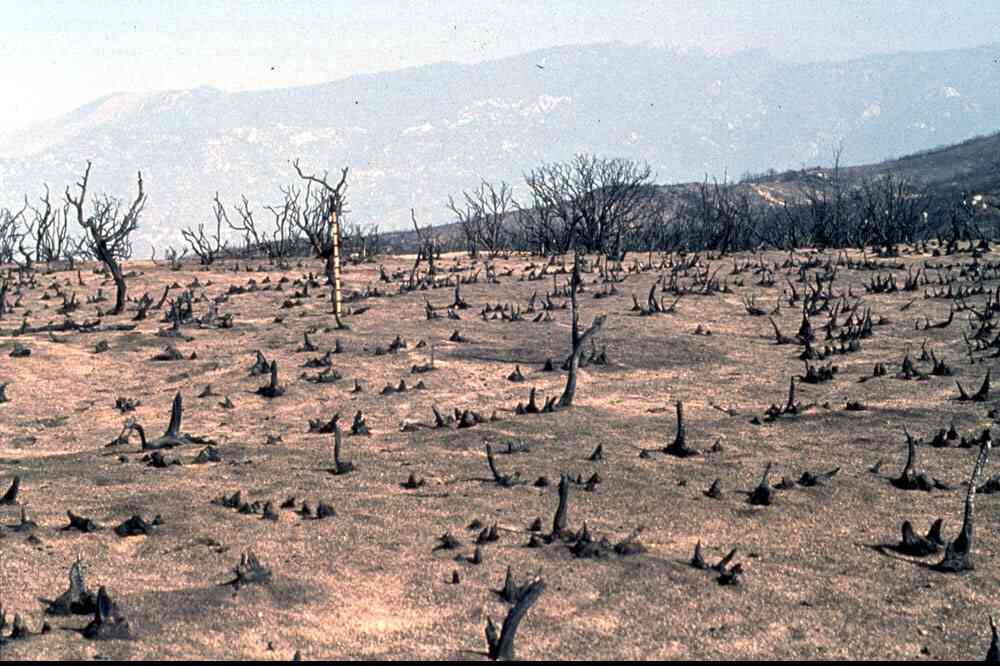The California chaparrals, located on the mountain slopes and coastal regions of California, are shrublands with a mediterranean-type climate. They have mild and wet winters and hot and dry summers. The word "chaparral" is derived from the Spanish word "chaparro" meaning "small" and "dwarf" and they cover 5% of California.
California chaparral during the wet season.
(source: https://www.desertmuseum.org/desert/habitats/chap/chapgallery.php)
California chaparral during the dry season.
(source: https://www.desertmuseum.org/desert/habitats/chap/chapgallery.php)
Naturally, chaparrals have infrequent fires where the time in between each fire ranges from around ten to even a hundred years. These fires occur mostly in the late summer and fall because there is very little rain throughout the year (38-100cm of precipitation a year). The plants in these regions though, are highly flammable because they are woody shrubs with hard and small leaves. The leaves are non-deciduous and are drought tolerant. However, after a fire, the chaparrals are covered in non-woody, soft-leaved plants known as fire followers. These grow after the first rains proceeding a fire and then die again during the dry summer.
California chaparrals must burn periodically to maintain its health. However, fires that occur less than 15-20 years apart prevent chaparral from recovering.
(source: https://www.desertmuseum.org/desert/habitats/chap/chapgallery.php)
There are three sub-ecoregions of the California chaparral ecoregion: the California coastal sage and chaparral, the California montane chaparral and woodlands, and the California interior chaparral and woodlands. These divisions are made based on the plants that inhabit these areas.
The chaparrals can also be characterized into two different categories: the cismontane chapparal and the transmontane (desert) chaparral. These divisions are also based on the plant distribution in these regions. The montane and transmontane chaparrals are located on the opposite sides of mountains where the transmontane/desert chaparral grow in the rainshadow of these ranges.



